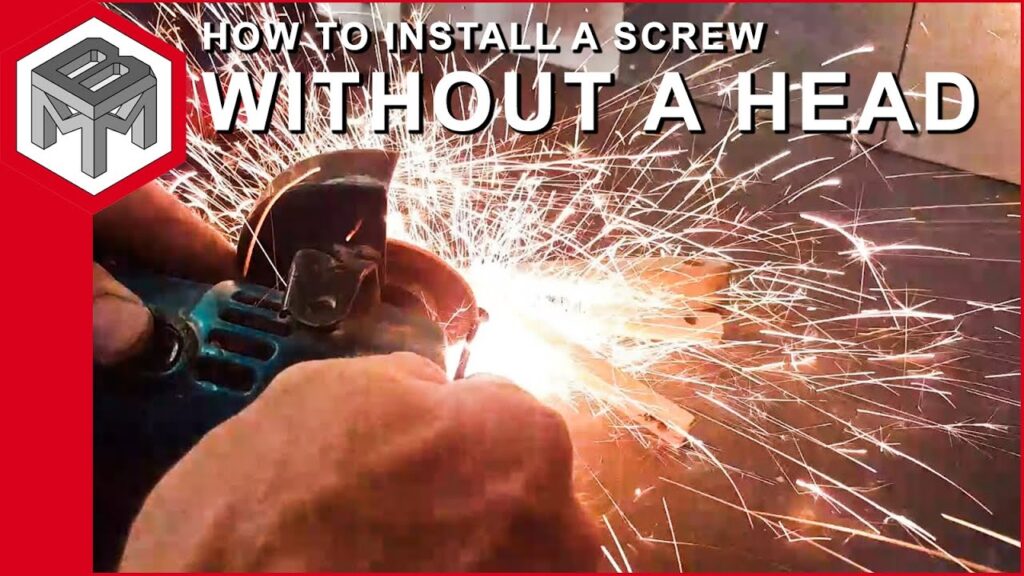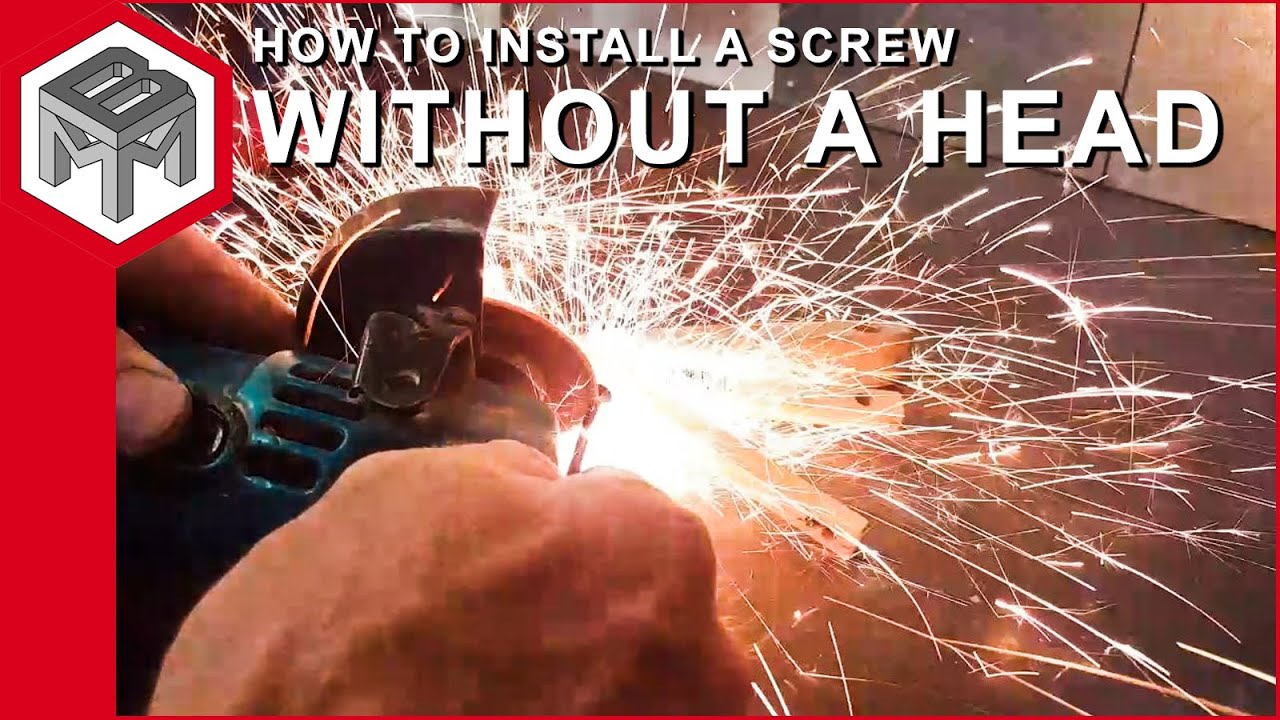
The Hidden World of Headless Screws: A Comprehensive Guide
In the realm of fasteners, the screw with no head, often referred to as a setscrew or grub screw, occupies a unique and often overlooked niche. These unassuming components play a critical role in countless applications, from securing gears on shafts to precisely positioning components in sensitive instruments. Understanding the nuances of headless screws – their types, materials, applications, and installation techniques – is crucial for engineers, machinists, and anyone involved in mechanical design and assembly. This comprehensive guide aims to shed light on the often-hidden world of these essential fasteners.
What is a Screw with No Head?
A screw with no head, at its core, is a fastener designed to be fully embedded within an object. Unlike traditional screws with prominent heads, a headless screw is typically driven flush with or below the surface of the material it’s securing. This design offers several advantages, including a clean, unobtrusive appearance, reduced interference with surrounding components, and enhanced safety by eliminating protruding parts. The most common type is the setscrew, which is used to prevent relative movement between two parts, usually a rotating shaft and a component mounted on it. These are tightened into a threaded hole, and the end of the screw presses firmly against the inner part, creating a strong frictional hold.
Types of Headless Screws
While the basic concept remains the same, headless screws come in a variety of types, each tailored for specific applications and materials. The primary distinguishing factor is the shape of the driving recess and the point style. Here are some of the most common:
- Slotted Headless Screws: These feature a simple slot that accepts a flathead screwdriver. They are generally used for lower torque applications.
- Socket Headless Screws (Allen Screws): These have a hexagonal recess that accepts an Allen wrench (hex key). Socket setscrews are capable of transmitting higher torques than slotted screws. They are perhaps the most common type of screw with no head.
- Torx Headless Screws: These feature a star-shaped recess that accepts a Torx wrench. Torx drives offer excellent torque transmission and resistance to cam-out.
Point Styles
The point style of a headless screw is critical to its performance. Different point styles are designed to provide varying degrees of holding power and to suit different materials:
- Cup Point: This is the most common point style. It features a concave cup that digs into the mating surface, providing a secure hold.
- Cone Point: This point style has a sharp, conical tip that provides a very strong hold. It’s often used in applications where precise positioning is required.
- Dog Point (or Half Dog Point): This point style has a cylindrical extension that fits into a pre-drilled hole. It provides a shear strength connection and prevents movement in all directions.
- Flat Point: This point style has a flat, smooth surface that provides a less aggressive hold. It’s often used in applications where the mating surface needs to be protected from damage.
- Oval Point: This point style has a rounded, oval-shaped tip that provides a balance between holding power and surface protection.
Materials and Finishes
Headless screws are typically manufactured from steel, stainless steel, or alloy steel. The choice of material depends on the application’s requirements for strength, corrosion resistance, and temperature resistance. Common finishes include:
- Plain Finish: This is the raw material with no coating.
- Black Oxide: This finish provides mild corrosion resistance and a black appearance.
- Zinc Plating: This finish provides good corrosion resistance.
- Passivation (for Stainless Steel): This process enhances the corrosion resistance of stainless steel.
Applications of Headless Screws
The versatility of the screw with no head makes it suitable for a wide range of applications across various industries:
- Securing Gears and Pulleys: Setscrews are commonly used to secure gears, pulleys, and other components to shafts. The headless screw is tightened against the shaft, creating a frictional force that prevents slippage.
- Positioning Components: Headless screws can be used to precisely position components in machinery, instruments, and other devices. The fine adjustment capabilities of these screws allow for accurate alignment.
- Adjusting Mechanisms: Many adjustable mechanisms, such as leveling feet on appliances or adjustable stops on machinery, utilize headless screws for fine-tuning.
- Mold Making: Used in mold making to secure different mold components together.
- Die Casting: Used in die casting for the same reason as mold making.
- 3D Printing: Used to secure parts of a 3D printer together.
Installation and Removal
Proper installation and removal techniques are essential for ensuring the longevity and performance of headless screws. Here are some key considerations:
- Use the Correct Tool: Always use the correct size and type of wrench or screwdriver to avoid damaging the driving recess.
- Apply the Correct Torque: Over-tightening can damage the screw or the mating surface. Use a torque wrench to ensure the correct torque is applied.
- Consider Thread Locking Compounds: For applications where vibration is a concern, consider using a thread-locking compound to prevent the screw from loosening.
- Removal: If a setscrew is stuck, applying penetrating oil or gentle heat can help to loosen it. Avoid using excessive force, which can damage the screw or the surrounding material.
Advantages of Using Headless Screws
Using a screw with no head presents several advantages over traditional headed screws:
- Clean Appearance: The flush or recessed installation provides a clean, unobtrusive appearance.
- Reduced Interference: The absence of a protruding head minimizes interference with surrounding components.
- Enhanced Safety: Eliminating protruding parts reduces the risk of snagging or injury.
- Space Saving: They require less space than headed screws.
- Adjustability: Allows for fine adjustments in various applications.
Disadvantages of Using Headless Screws
While headless screws offer many advantages, there are also some potential drawbacks to consider:
- Lower Torque Capacity: Compared to headed screws, headless screws typically have a lower torque capacity.
- Difficult Removal: If a setscrew is corroded or damaged, it can be difficult to remove.
- Potential for Damage to Mating Surface: Some point styles can damage the mating surface if over-tightened.
Choosing the Right Headless Screw
Selecting the appropriate screw with no head for a specific application requires careful consideration of several factors:
- Material: Choose a material that is compatible with the environment and the mating materials.
- Point Style: Select a point style that provides the required holding power and protects the mating surface.
- Size: Choose a size that is appropriate for the load and the available space.
- Drive Type: Select a drive type that allows for adequate torque transmission and easy installation.
Conclusion
The screw with no head, though often unseen, is an indispensable fastener in a multitude of applications. Its unique design offers a combination of aesthetic appeal, functional advantages, and space-saving benefits. By understanding the different types, materials, and installation techniques, engineers and technicians can leverage the versatility of these headless screws to create robust and reliable mechanical assemblies. Remember to carefully consider the application requirements when selecting a screw with no head to ensure optimal performance and longevity. [See also: Threaded Fasteners Guide] [See also: Types of Screws and Their Uses] [See also: Torque Specifications for Fasteners]

